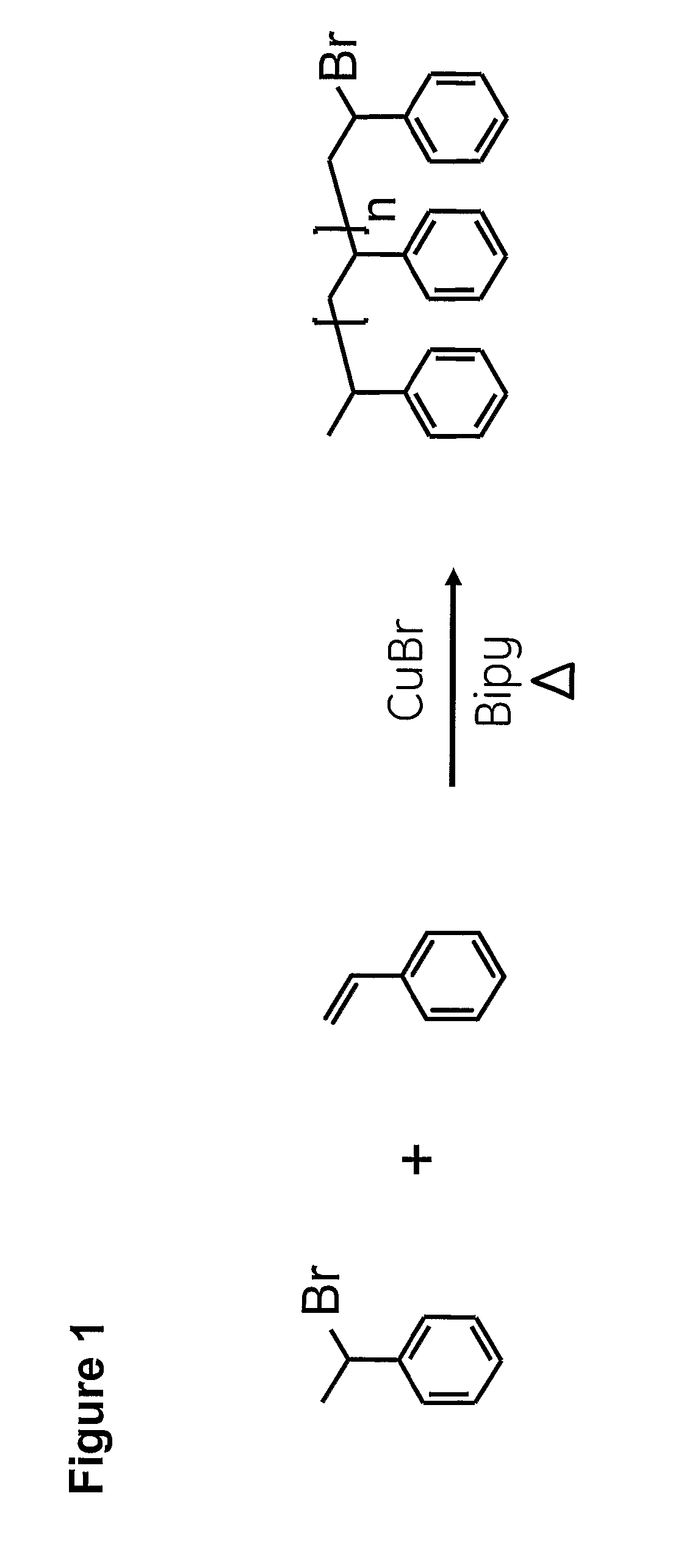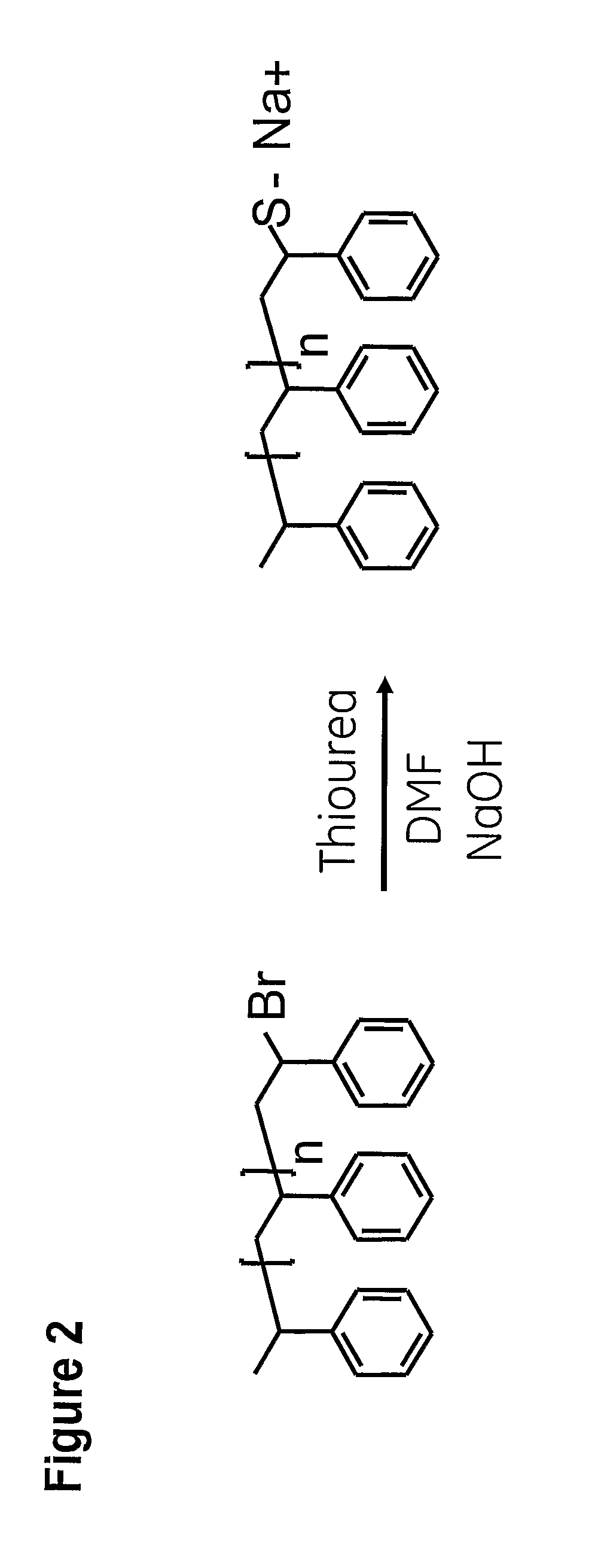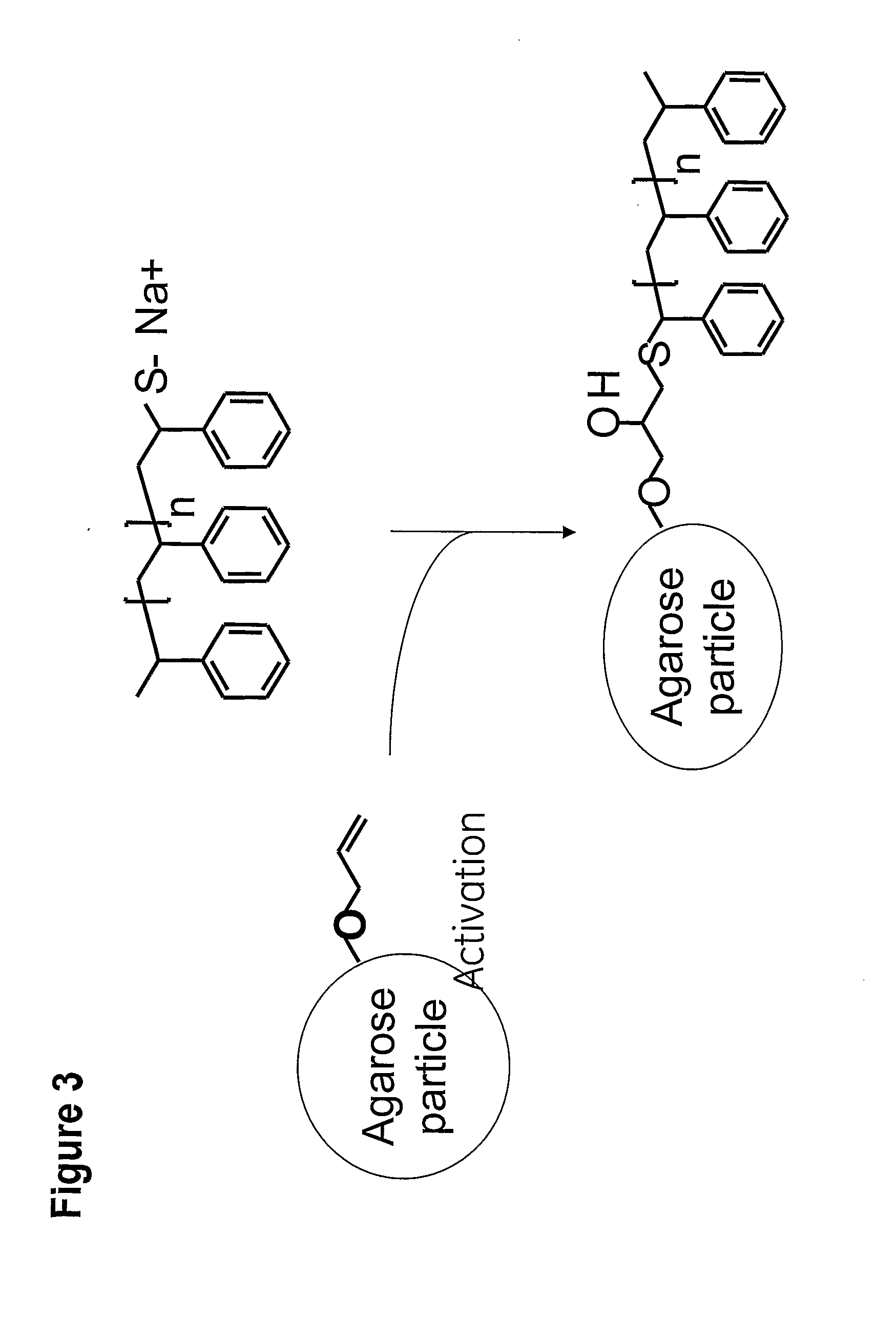Method of preparing a separation matrix
a separation matrix and matrix technology, applied in the field of separation of molecules, can solve the problem of relative wide distribution of polymer chain lengths
- Summary
- Abstract
- Description
- Claims
- Application Information
AI Technical Summary
Benefits of technology
Problems solved by technology
Method used
Image
Examples
example 1
Synthesis of ω-Bromo End-Functional Polystyrene by ATRP
[0068] Styrene (St) (20.8 g, 200 mmol, 20 eq.), copper bromide (CuBr) (1.434 g, 10 mmol, 1 eq.) and 2,2′-dipyridyl (Bipy) (3.436 g, 22 mmol, 2.2 eq.) were mixed in a round-bottom flask under magnetic stirring. The solution was flushed with nitrogen or azote gas for 15 min. (1-bromoethyl) benzene (1-PeBr) (1.85 g, 10 mmol, 1 eq.) was added to the flask which was subsequently sealed. The reaction was warmed from room temperature to 110° C. and allowed to proceed for 5 hours. The reaction mixture was then cooled down and the polymer dissolved in CH2Cl2. The solution was passed through a short column of silica. The solvent was evaporated to give a viscous crude product. The crude product was dissolved in a minimum amount of CH2Cl2 and the polymer was obtained by re-precipitation of the CH2Cl2 phase in MeOH (volume of MeOH=10 times the volume of CH2Cl2). The precipitated polymer was filtered on a glass filter and dried under vacuum ...
example 2
Synthesis of ω-Thiolate End-Functional Polystyrene
[0070]ω-bromo end-functional polystyrene from example 1 (4 g, 2 mmol, 1 eq.) was dissolved in DMF (30 ml) in a round-bottom flask under magnetic stirring. The solution was heated to 100° C. and flushed with nitrogen gas for 15 min. Thiourea (0.305 g, 4 mmol, 2 eq.) was added to the flask, which was subsequently sealed. The reaction was allowed to proceed overnight at 100° C. NaOH (0.16 g, 4 mmol, 2 eq.), dissolved in water (1 ml), was added to the flask and the reaction was allowed to proceed overnight at 95° C. The reaction mixture was then cooled down and CH2Cl2 was added. The organic phase was then extracted three times with a saturated aqueous solution of NaCl. The organic phase was then dried over MgSO4 and filtered on a glass filter. The solvent was evaporated and the obtained crude product was dissolved in a minimum amount of CH2Cl2. The polymer was obtained by re-precipitation of the CH2Cl2 phase in MeOH (volume of MeOH=10 t...
example 3
Gel 1: Coupling of ω-Thiolate End-Functional Polystyrene (Mn=2000 Gmol−1) on activated Sepharose™ 6FF
[0072] Brominated Sepharose™ 6 Fast Flow was obtained following a well-known standard procedure. Thus, 5 ml (0.325 mmol allyl groups) of allylated Sepharose™ 6 Fast Flow with a loading of 65 μmol / ml gel were activated using bromine. After activation, the gel was washed with acetone and dried sucked.
[0073]ω-thiolate end-functional polystyrene from example 2 (3.25 g, 1.625 mmol, 5 eq. to allyl groups) was dissolved in acetone (10 ml) and triethylamine (0.33 g, 3.25 mmol, 10 eq. to allyl groups) was added to the solution. The activated gel and the polymer solution were mixed and the mixture was shaken overnight at 50° C. Gel 1 was then washed with acetone, ethanol and water until non-coupled polymer was removed.
PUM
| Property | Measurement | Unit |
|---|---|---|
| PDI | aaaaa | aaaaa |
| PDI | aaaaa | aaaaa |
| polydispersity index | aaaaa | aaaaa |
Abstract
Description
Claims
Application Information
 Login to View More
Login to View More - R&D
- Intellectual Property
- Life Sciences
- Materials
- Tech Scout
- Unparalleled Data Quality
- Higher Quality Content
- 60% Fewer Hallucinations
Browse by: Latest US Patents, China's latest patents, Technical Efficacy Thesaurus, Application Domain, Technology Topic, Popular Technical Reports.
© 2025 PatSnap. All rights reserved.Legal|Privacy policy|Modern Slavery Act Transparency Statement|Sitemap|About US| Contact US: help@patsnap.com



